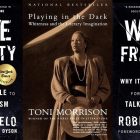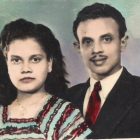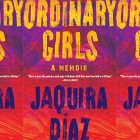Trans Panic and the Trans Literary Imagination

I had a short story titled “Rush Hour” that I workshopped at Tin House but had been ultimately stuck on since writing its first draft in 2019. The story is about a trans woman named Hila who wakes up one morning to find her roommate moving out because he learned Hila was trans a few weeks prior, leaving her to come up with the rent on her own. As Hila attempts to come up with the money, she finds herself revisiting the life she once shared with her ex-partner. The primary piece of feedback I received during workshop was that the story was written from a distant vantage point, not from directly behind the eyes of the protagonist but from somewhere up above, and that this made it difficult to connect to Hila as a character. The feedback didn’t make sense to me for a long time and I struggled with revising the story, but I couldn’t let it go because the story’s theme was important to me.
“Rush Hour” is essentially a story about a woman early in her transition who didn’t necessarily want to detransition but was overwhelmed by the difficult social realities of being a trans woman. I felt this was a worthy emotional territory to explore because not only was this something I dealt with as a trans woman, I also wanted to read a story that wasn’t strictly about anti-trans violence. How does a trans woman dream of her future after languaging her transness? was the central question for me. Still, I wrote the story in the way many trans writers are perhaps expected to write: Hila experiences anti-trans violence, which I mistakenly assumed was the only way to enter a story with a trans protagonist. I thought I could earn such a beginning because rather than the story being about Hila defending or challenging violence, the violence would merely be the impetus for Hila’s emotional journey of revisiting her past to regain some sense of security in herself and her future.
I couldn’t ever ground the story enough in Hila’s emotional interiority, though, even though I had a premise and a source of tension that gave my protagonist a reason for moving through her world. Why couldn’t I write close enough to Hila in order to tell the story in her voice? The reason, I realized, was because I was writing the story while in a deep state of what I call “trans panic.”
Trans panic, according to the American Bar Association, is a legal defense that allows a murder-defendant to claim that the discovery of a woman’s transgender identity “provoked him into a heat of passion,” causing him to lose his self-control and kill her. Since trans panic, however, isn’t a standalone defense but rather a defense strategy associated with the provocation and heat of passion defenses, the jury is responsible for determining whether a murder-defendant was provoked into a heat of passion by “reasonable provocation.” This means when trans panic is employed, the jury members are being asked one question: can you, as a reasonable person sitting in the courtroom, imagine yourself also losing your self-control and murdering a woman after learning she is transgender?
In that small space between reasonable and death is where it’s like to live as a trans woman in the United States, where “the jury” is a constant presence with doctors, politicians, teachers, lovers, family members, and neighbors all being empowered to judge the worth of my life. This is what I was reckoning with in 2019 while writing “Rush Hour.” I was in graduate school and still early in my own transition, navigating how to be a student and a teacher as myself. Trump was president and there were countless bills aiming toward criminalizing trans people being filed all across the country, and every month was proving to be deadlier for trans women of color than the one before. Myself and my imagination were consumed by trans panic, and I had inadvertently introduced “the jury” into my short story.
“The jury” was present in my decision to write “Rush Hour” in the third person, and this was the error my Tin House cohort sensed in their feedback: the story became about my own craving for a release from trans panic rather than about how Hila experienced her world. I built a bridge from my story to my social reality of being a trans woman by limiting my protagonist to the anti-trans violence of our world and assuming it was accurate.
It’s not that there is an issue with writing about the sociopolitical realities of anti-transness in fiction; I’m specifically speaking about the perspective with which I enter my own literary imagination. I struggled to find a new way of entering the story, so I did what I always do when I struggle with writing: I turned to reading. What’s been equally difficult to reckon with as a trans writer, however, is finding that “the jury” is also a present gaze throughout the transgender literary canon, and no other story demonstrates the immanence and dynamics of trans panic and the gaze of “the jury” so keenly than “Other Women” by Casey Plett.
At the start of the story, included in Plett’s first collection, A Safe Girl to Love (2014), Plett ushers her trans protagonist, Sophie, into a familiar world:
My mom picked me up fresh off the red-eye and we went for donuts. It was the day before Christmas Eve. I told her all the fun parts about living in Portland and she listened and hummed and marched her way through a Tim Hortons dozen. When I asked her about life at the hospital, she said well, thanks for asking. It’s just fine. I was silent for a bit so she would know I wanted to hear more, and then she told me a story about how another nurse had misheard a 99 code and went pinballing through the hospital halls to find a patient not at death’s door, as she had thought, but sitting with her newborn grandchild. That’s funny, I said. Yeah, she said, running a hand through her wispy hair.
Sophie’s polite conversation and her mother’s strained responses display an immediate tension, and even though Sophie doesn’t offer any context for this tension until the following paragraph, despite telling her story in first-person and in the past tense, I as a trans reader know this conversation and tension well:
My mom didn’t say anything about gender the whole day, which was nice of her. It was my first time home in Winnipeg since I asked everyone to call me Sophie, about six months ago, after I moved away last January. I wanted my visit to be a Christmas the same as any other. Mom’s been trying to call me Sophie, but it’s hard for her.
If in fiction, the desires of a protagonist define her unique agency and ability to overcome the source of tension that puts the story in motion, then Sophie desires a visit home like any other, before she languaged her transness, but her mother is positioned as the tension preventing this from happening. More specifically, it’s her mother’s transphobia that is the problem. I make this distinction because if transphobia is Sophie’s primary source of tension, then she is not a protagonist with a problem or source of tension—Sophie herself is the problem and source of tension. Consequently, Sophie is stripped of her agency and left to the perverse whims of non-trans characters, despite the fact the story is written in first-person from her point of view. I emphasize the story’s point of view because it reveals how fluid the boundaries can be between the reality of the story and the social reality of being a trans woman.
Even though “Other Women” is written in the first-person past tense, the story is still structured as a linear sequence of events that begins by only hinting at a tension in a story where the events have already happened. This suggests that there is an expectation the reader will arrive at the page already harnessing trans panic, or at least possessing a knowledge of the stigma around trans people, much like a lawyer employs the trans panic defense because the possibility of a jury being transphobic is very likely. “The jury” as a literary gaze, however, positions Sophie, in the telling of her own story, as needing to justify and defend herself against anti-trans violence, ultimately affirming that the violent social realties of being trans determine her sensibilities as a transgender character. Even in our literary imagination, trans women are not free from trans panic. Thus non-trans characters are not only centralized but have the most agency, which is demonstrated by Sophie’s relationship with her best friend, Megan.
When Sophie’s mother has to leave for work as soon as they arrive home from the airport, Sophie calls Megan to hang out, noting the comfort she feels around her because they could do anything together and it would still be fun. Megan decides that they should gather recyclables to make a little money. When Sophie arrives to Megan’s house, they embrace and laugh and begin to gather the bottles and cans in bags, and as they are about to leave, entirely unprovoked, Megan says:
Okay, sorry, I have to ask. Do they look like man-boobs or are they real girl-looking boobs? I didn’t want to answer, [Sophie thought]. I’m only a year on hormones, but even though I’m a B-cup, I’m also six feet and they still seem small. They do look like girl boobs if you see them under clothing though, so I said, do you wanna—? and [Megan] said yes before I could finish.
Megan’s eagerness and entitlement transforms her mere curiosity into self-empowerment, solidifying her right to decide the validity of Sophie’s privacy, and doing so showcases her true agency in Sophie’s story. Sophie then proceeds as a protagonist merely going through the motions, whereas the non-trans characters continue to have free access to her body for their own pleasure.
It can be argued this is the function of a “cis gaze,” in which non-trans characters take center stage in trans fiction while transgender characters become vehicles for a cis person’s fetishes, but to limit transgender sensibilities to this gaze suggests anti-transness is only a sociocultural misunderstanding between individuals and ignores the legally sanctioned power against transgender peoples that is promised by the American state, as “Other Women” later reflects when Megan blames Sophie for instigating a classmate’s violent anti-transness. I’m certainly not saying transgender fiction needs to exist within a gender fluid utopia free of violence, but when we center the desires of transgender characters around just surviving trans panic, this implies that the social realities of trans panic are the true definition of the trans human experience.
When I began my short story with violence and placed my protagonist in trans panic, I made her the main source of tension, preventing any future she desired— within the context of trans panic, trans women are only expected to die. This is the curious part about trans panic: panic isn’t an organic part of the trans experience; trans panic is other people’s panic about trans people, and we are just expected to either negotiate with it every day, or internalize it. Trans panic feels like both having and not having agency, and this idea led me to how to revise my story. In order to mirror the paradox of trans panic, I changed the point of view of the story from the third-person to the second—then I was free to write from a vantage point of Hila being told what to do (“the jury”) while the voice still being her own. This is how I returned the agency back to my protagonist because living in trans panic is like living in second-person and seeing yourself from an “other’s” point of view.
I refuse to internalize trans panic any longer, but I recognize it is a part of trans culture and our human experience, and these are the questions that guide a lot of my inquiry: what is trans culture, and where does trans fiction fit into it? I’d like to emphasize that I’m not speaking on behalf of all transgender communities like our country assumes we can, but what has defined a trans culture for me is shared experience, including with the body but also with ways of thinking and feeling.
There are so many things my friends and family couldn’t understand when I first started hormone therapy or when I first started navigating relationships and sex or how to come out at work. Then I began a memoir project called Rituals, which was an interview-based project that focused on transgender people living in the Central Valley of California. Through this project I was able to develop a language for my identity because it was affirmed by someone going through the same experiences. There was one trans man I met and who I now call a friend, and at one point we talked about common phrases we heard a lot when people learned we were transgender, like, “Oh I couldn’t even tell you’re trans!” Both of us both laughed at the idea of non-trans people thinking this is a compliment, and at the same time, we said: “Aw, that’s too bad!” We shared a desire to be known as trans and we wanted our unique human experience and knowledge to be recognized along with it. But a large part of trans people’s shared experiences is violence, too—even in our literature.
Even the most notable contemporary work of trans fiction, Destransition, Baby (2021) by Torrey Peters, is framed by trans panic. In an interview with the Rumpus, Peters explains the title of the novel “is a pun,” but she also thinks it is “a condition, where the comma is a painful knife’s edge that you walk as a trans woman. I wanted to fall off in one of two directions.” She continues, “To one side, if I could have a baby, be a mother, I think I would have felt a kind of legitimacy. In the other direction, if I could have found out a way to live comfortably in some kind of detransitioned state.” These directions define the novel’s characters—not only Reese and Ames but secondary characters too—and are rooted in trans panic. They imply non-trans characters still have the power in defining the lives of transgender characters.
This may be true in our social reality, but does it have to be true in our literature? It can be argued that the novel imagines its characters on the knife’s edge—Reese with her values cored into what she calls the “Sex and the City problem,” resulting in her trying to decide between career, family, marriage, or art as to which future to head toward, and Ames trying to build a future where he can be detransitioned but still have access to his life with Reese and thus his transness. But if “the blade” simply represents the edge trans women walk in life, we can’t ignore then the person holding “the blade” to our throats.
I acknowledge I only reference works by white trans writers in this essay and can only speculate that trans panic is so present in these works because it allows white trans writers to claim stake in systems of oppression without confronting their own privileges. Regardless, I’m not trying to deny the greatness of Detransition, Baby; I’m only questioning its perspective. Because the truth is, I don’t know how to hold trans panic. It’s illogical but real; it doesn’t happen but it’s always happening; it’s historical but a trend; I exist but don’t. It seems whenever I make a decision to prioritize my own imagination as a trans woman, I enter a world that is seemingly impossible. So to me, to write trans fiction is to sharpen the blade with which I can carve the story of my human experience into history so that when I dream of a future beyond violence, I won’t feel like I’m lying.
Perhaps I can clarify my perspective with a personal story about a relationship I once had that displays trans panic. E and I met on Grindr my first summer in Chicago. He swore I messaged him first asking for his number, but I stand by my memory of that being him. After our first date, though, we agreed the specifics didn’t matter because our first meeting felt like we walked into a story that had been writing itself for years. Being with E was instantly comfortable and easy.
That first night, E arrived at my apartment and the first thing he said was, “For some reason, I feel like having a Capri Sun.” I shrugged and said, “Let’s get some.” We walked to a Walgreens and bought one box of the fruit punch (my favorite) and one of cool freeze (his), freed a few pouches from the boxes for ourselves, and stored the rest in the fridge back at my apartment. Then we took a long walk around my neighborhood. He told me about his family as I pointed out the hydrangeas and the dogwood, a habit of my childhood growing up in California. He immigrated from Ghana to the United States with his father and sister when he was seventeen. His father was a pastor, and his sister was a nurse and like a mother figure to E since their mother still lived back home running a family business. “My mom is still my mom, though,” he said, speaking to how his sister can sometimes be too protective. Laughing, he said “My mom is my G.” As he told me stories about his childhood, I adored the way he spoke about his family and the women in his life. I had been in Chicago not even a year when E and I met, and the entire time I lived in the city, I felt homesick. At the end of our date, E promised to make me love the city because he had to do the same when he moved here. From then on, we were inseparable.
Every day we went on long walks together or grabbed burgers in Andersonville or tacos in Pilsen or went to the movies in Rogers Park. Even after all the years E lived in Chicago, he was still visiting places for the first time with me, like the bird sanctuary on Irving Park or Rogers Park Beach near Evanston, which was the beach that I felt most comfortable calling “a beach.” Suddenly, a month had passed, and it seemed everywhere we went someone was telling us how lovely a couple we made, and we were happy.
It was June and we had just celebrated E’s birthday when his best friend outed him to his family as dating a trans woman. Suddenly the world E and I built together was invaded by the realities of trans panic. It all happened so quickly but I remember only saying to E that I didn’t know what any of it had to do with us.
“My family is just disappointed,” he told me. His sister was the most angry. She said she felt betrayed. She had already told her father what she learned and she threatened to tell E’s mother and his extended family back in Ghana. She threatened sending him back home. All of this confused me, and I tried to balance the cultural differences between mine and his family’s expectations, but E was still an adult, and I didn’t understand why he didn’t defend himself, or our relationship. But he was devoted to his family, the thing I loved about him the most.
E was stressed and confused and hurt by his friend. He tried his best to maintain the time we spent together, but our time was strained by his family calling whenever he left the house and his sister calling on FaceTime whenever he didn’t answer. When his sister first confronted E about everything, she demanded my phone number and social media accounts. To do what? I felt angry that not only was my relationship being interrupted by anti-transness, but that I was expected to be okay about it and about being interrogated, as if anti-transness is normal. As if his sister’s self-empowerment over my transness was real.
My anger confused E. “Just give it some time to die down,” he said, but he couldn’t see that my ability to imagine our future was damaged. With trans panic so close to my heart, I was consumed all over again.
I felt embarrassed. I felt exposed. I was the tranny. I was stripped of my agency over the situation. I thought about the implications of his best friend knowing that I’m trans. Did I not pass? Did the people who I thought were checking me out on the street were actually just clocking me? Why did I have to give a fuck about passing anyway? Would I always remain unlovable? I wanted to scream about all of this, but instead I picked fights with E about nothing. About him not calling, about him not texting, about him not being present. Really I wanted him to understand how trans panic felt for me, and always had.
“Why are you making this about you?” he said to me one night. And he was right. I was trans. Hadn’t I expected this? And he lost his best friend. His family was threatening to send him back to Ghana. He had a future to lose. But what he misunderstood was that everything he was afraid of losing, I had already lost. I started to internalize trans panic as a child. I hid myself and understood that the future was not other people. Then I built my whole young adult life void of my true self in order to survive. I endured rape and sexual assault, I tolerated emotional abuse, the shame of racism—all of this in order to one day be safe enough to dream of the future I know I deserved. Suddenly, I had completed school, earned a job that makes me happy and affords my safety, I belonged to my body for the first time in my life, and I had E. Still, none of it mattered because being trans is not considered a life worth living.
When I told people about what happened, they always sympathized with me and E, but they also asked how we’d make it through, and if they didn’t, it’s because they were already certain we would. I was expected to endure trans panic, even if I didn’t want to.
E and I didn’t make it after another month. I wanted to be with him, but I simply couldn’t go back to the amount of shame, anxiety, and fear of my early life, and he wasn’t ready to be honest about who he was in his own life. I had to turn away from trans panic, and that’s what I imagine I’m trying to do in my fiction.
Whenever I begin to see new characters for a story, they always enter in the same scene in my mind. In trans mythos, looking in the mirror represents a hidden self and the language for transness emerging, but I like to extend my trans characters’ relationships to the mirror as part of their development. I imagine them looking in the mirror and seeing what is not yet there but can be. Then, I imagine, the characters looking in the mirror and seeing themselves for the first time (trans euphoria). Then, through a window, they notice a stranger is watching (trans panic), so they decide to look back and make eye contact. Then, in their periphery, they catch a glimpse of a bird or a flower and see the rest of the world.



